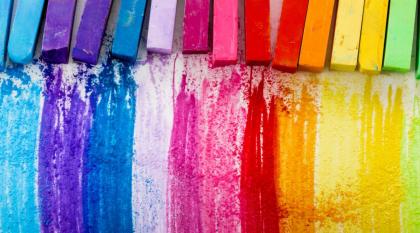Business English Vocabulary: Art and Design
If you are learning English in the hopes of securing a job in the field of Art & Design, there are some terms that you will need to be familiar with. In this highly creative and specialized industry, there is a lot of jargon you will need to understand to have any chance of success. Read on and memorize the following terms.
If the arts are not relevant for you, you might enjoy our English Accounting Vocabulary or English Education Vocabulary posts.
Different forms of Art and Design
Applied Art
This is art created with a functional purpose. It often refers to architecture, as buildings are created with an interesting visual appeal but at the same time must be possible to live or work in. Applied art can also involve fashion design, bookmaking, illustrations, and commercial art.
Digital Art
This comprises art produced by a computer. It is a relatively new form of art that is involved in music, print, and even painting.
Fine Art
This refers to art created solely for the purpose of being looked at, or listened to. It includes art forms such as painting, drawing, photography, architecture, sculpture, printmaking, and film, as well as music and poetry. A Master of Fine Arts degree (MFA) is a degree you can get to show your proficiency in a particular fine art.
Graphic Design
Graphic Design is concerned with the use of text and pictures in marketing and advertising. The aim is to communicate a feeling or message that is associated with a brand or project.

Hand-picked related content: 5 WAYS BEING BILINGUAL MAKES YOU SMARTER
Art Jargon
Abstract
A picture based on real-life objects that has been distorted. Despite looking completely different thanks to the exaggeration of certain features and the experimentation with colour, it is clear to see what it was originally.
Blend
This word means to combine two colours together so that you can’t see where they join. Instead they create a seamless transition between the colours.
Focal point
This is the part of a picture where the greatest emphasis is made. The eye should be drawn immediately to it before other details are noticed. “Focal” comes from “focus” – the place you are supposed to pay the most attention to.
Hatching
Tiny lines are drawn close and parallel to each other to create a form of shading. The closer the hatching lines are together, the darker the space seems to be.
Impasto
Paint is laid on the canvas very thickly, so that brush strokes are still visible long after the paint has dried. Vincent van Gogh was a huge fan of this technique.

Medium
The medium (plural, media, although sometimes “mediums” is accepted) of a piece of art is the type of art that it represents: for example, a painting, a sculpture, a print, etc. Medium also has a further layer, which is the actual material the piece is made from. So, painting is a medium, but a particular painting might be in the medium of oil paint on canvas. Throughout the years, media have included more and more materials as artists push the definitions of art and try out new things such a pieces of trash, toy parts, or even salt.
Model
If you have a big project on your hands, it can be helpful to make a miniature version first to show the client. This model is made more quickly, out of cheaper materials, to show the client what they can expect, or to test a project before it begins. In Digital Art this might be known as a mock-up. The model is also the word for person who poses for a painting, sculpture, or photograph.
Perspective
Perspective is the direction from which you are viewing something. Artists can exaggerate perspective by having objects smaller when they are meant to be further away and larger when they are close to the viewer.

Proportion
Proportion is the size of an object in relation to other objects. So an apple can seem small in relation to a watermelon, but it is big in proportion to a peanut. Within a piece of art, you might talk about how big certain objects are in proportion to others, and also how realistic or exaggerated the proportions are.
Scale
This term refers to the size of an image. You might have “large scale” art or “small scale.” You can also “scale” something up or down, which means you make it bigger or smaller.
Smudge
To smudge something, you push your paint, ink, or whatever media you have chosen, and smear it across your canvas so that it appears blurry.
A job in the Art & Design sector is extremely rewarding, and allows you to truly indulge your creative side. It is also a very competitive area, so it is important you know a wide range of vocabulary to be in with a chance of getting your dream job.
If you are interested in learning more about how learning English can benefit your career, contact one of our student advisors.




